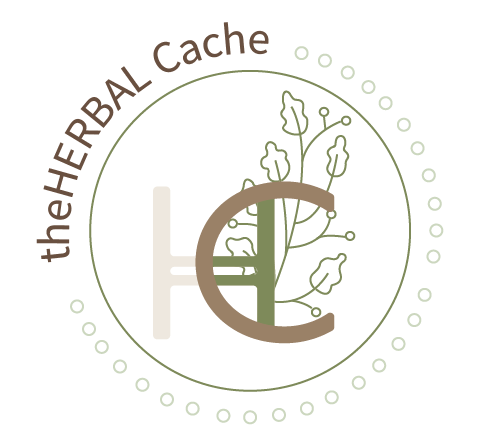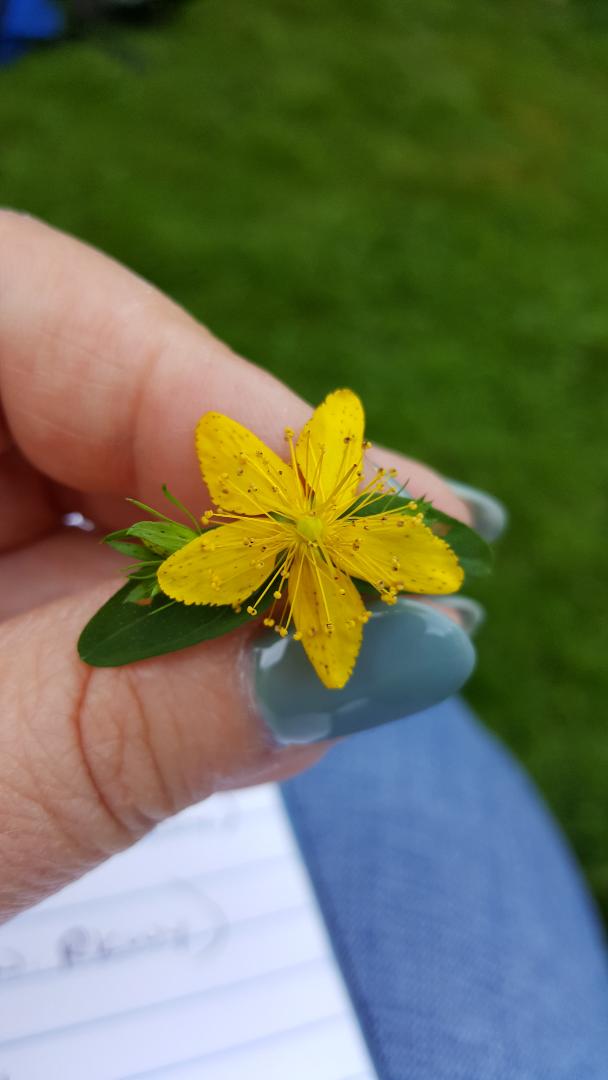Virginia Waterleaf
I love seeing virginia waterleaf coming up because I know that spring is here and winter is behind me. Here in central Minnesota, it is one of the first spring ephemeral plants to emerge from the cold ground. Sam Thayer calls it an “optional ephemeral” because it is abundant in the spring, but becomes sparse in the summer months.
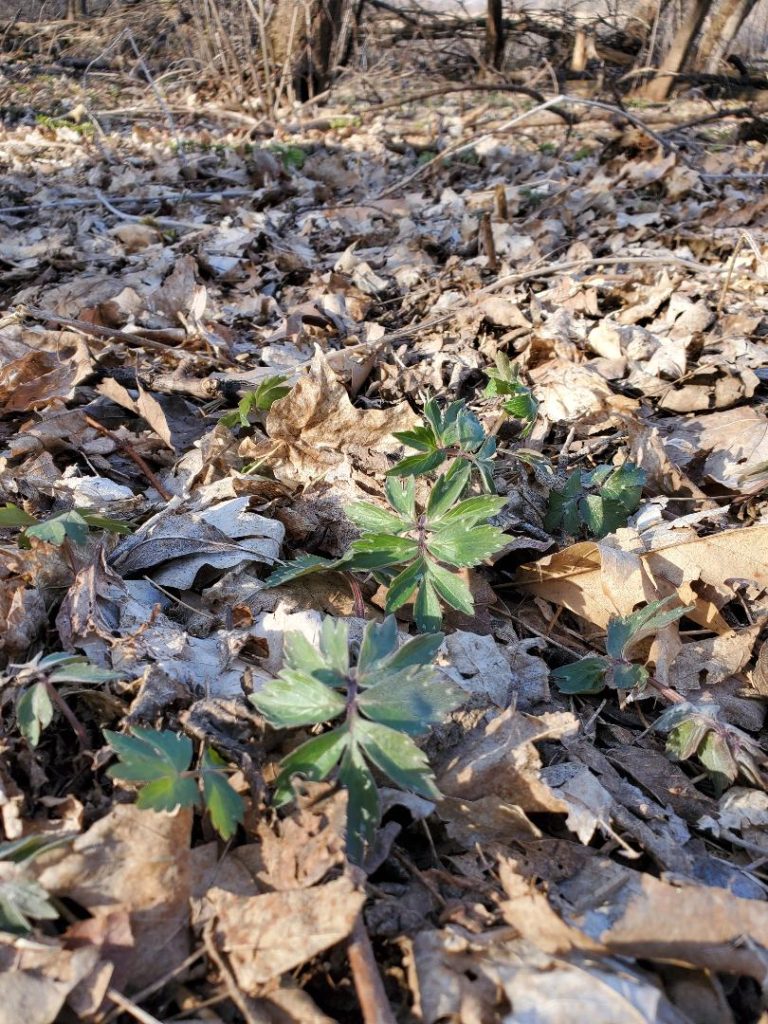
Virginia Waterleaf emerging from under the dead leaves in early April.
Hydrophyllum virginianum
The generic name, Hydrophyllum, is Greek for “water leaf”. Hydro is from hudor or hydor, which is “water”, and phyllum is from phullon or phyllon, which is “leaf”. This name also refers to its wetland habitats. The specific epithet, virginianum, is Latin for “of Virginia”, where it was first studied.
You can easily identify virginia waterleaf in the spring because of the distinctly spotted leaves, giving it the appearance that it is stained by water drops. Virginia waterleaf is one of the most prolific varieties, and it flourishes far past Virginia into areas such as Minnesota.
Virginia waterleaf is a herbaceous perennial in early summer. It can be found mainly east of the Mississippi River, but it has western cousins, the California waterleaf (Hydrophyllum occidentale) and the Pacific waterleaf (Hydrophyllum tenuipes).
Although this plant is fairly competitive with other plants, there are some areas, such as New Hampshire in which this is becoming endangered.
Bees and white-tailed deer love this plant for gathering nectar and eating.
Other common names for this species are Brook Flower, Burr Flower, Eastern Waterleaf, Indian Salad, John’s Cabbage, Shawanese Lettuce, Shawnee Lettuce, Shawnee Salad, Virginian Waterleaf, and Waterleaf.
Habitat
Virginia waterleaf can be found growing in wet, wooded areas. It prefers shade. It likes a a moist humus-rich soil. Slugs are particularly fond of this plant and will soon destroy it if given a chance
The plant grows in a clump like format with limited spread. The root pattern is rhizomatous with underground stems sending roots and shoots along their length. The clumps can easily be propagated in the spring.
This plant is considered a nice groundcover by many gardeners.
Plant Features
In early spring, Virginia waterleaf can be easily identified by the spots on the leaves, appearing to be waterdrops, hence the name. The leaves are deeply lobed, with jagged edges, and get darker as the plant matures.
It flowers in May to early June and seeds in July and August, lasting 3-4 weeks. The flowers form in dense clusters and are are white to dark violet in color.
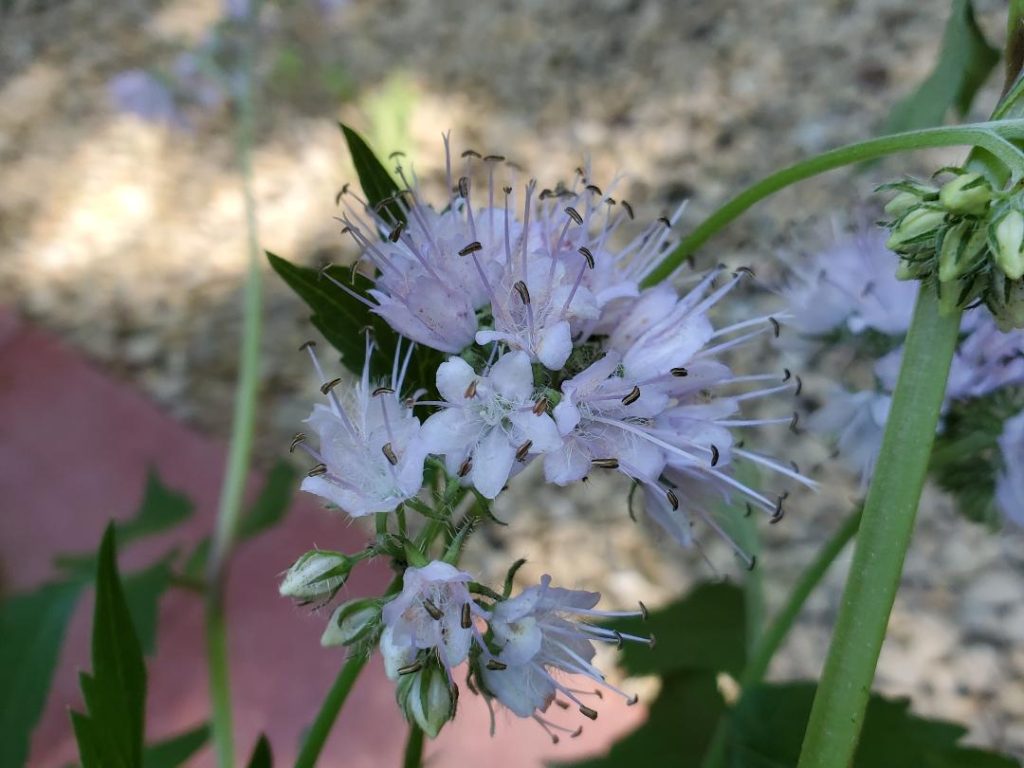
Photo by Pam Broekemeier
The leaves are alternate with the stems being slightly jointed. The stem is covered with dense, stiff hairs. Where the plant divides, the stem is more red or purple in color. The plants get about 2 feet tall.
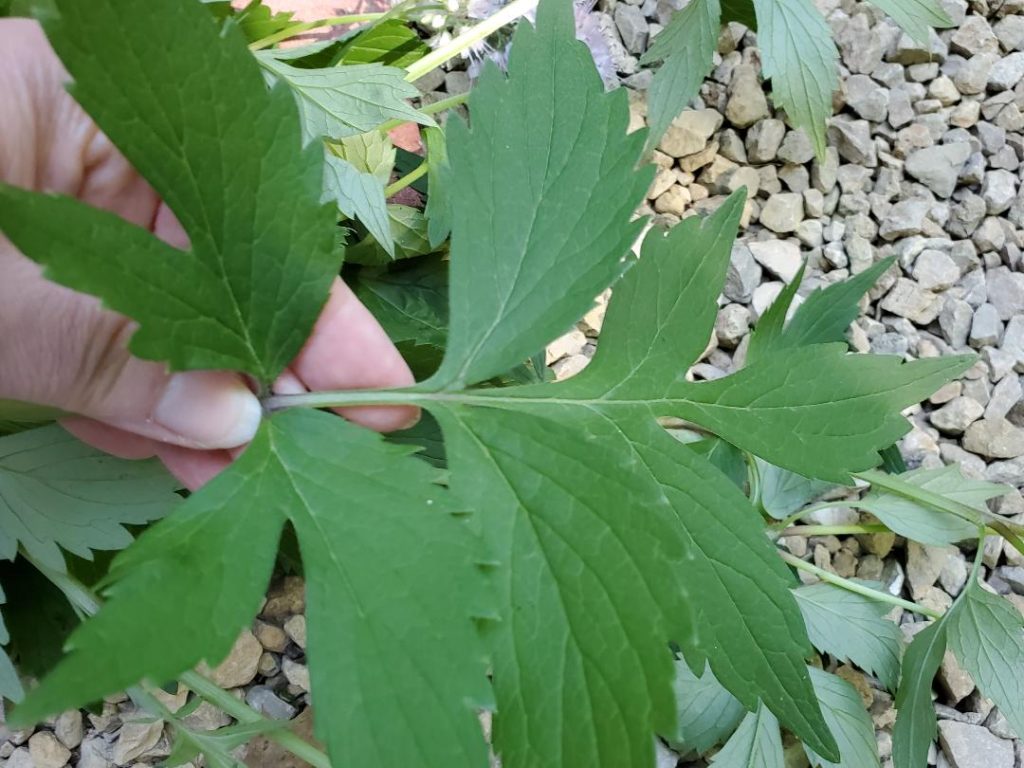
Photo by Pam Broekemeier
Edible
Both the Native Americans and the early European settlers used this plant.
Known also as Indian Salad, the leaves taste a bit like parsley and are good in salads this time of year or in soups as a potherb. The leaves are also good fried in fat or oil when they are tougher.
The leaves can be eaten when young. They have a rather bland taste and are a nice addition to any leafy salad. The leaves do have a slightly fuzzy texture, but when mixed with other greens, you don’t notice it. The older leaves can be eaten as well, and are more like spinach. According to Sam Thayer, they are to be eaten like most greens, used as a side dish or snack, not a main dish.
The flowers and flower buds can be eaten. Add them to a salad for decoration and to eat! The buds are similar to the raabs of garlic mustard and bittercress. Mix them with the leaves and some other greens and they make a fun, textural addition to the salad.
The leaves and flowers can be eaten raw or cooked. When cooking, it is recommended to boil twice with fresh water to remove some of the bitterness. The cooked leaves and shoots can be served with salt, pepper, butter, or vinegar. The leaves and shoots are best eaten before the flowers emerge.
Some Native American tribes fed the roots to their ponies to fatten them and to shine up their hair.
Medicinal Properties
Minnesota herbalist Matthew Alfs says virginia waterleaf is a first-rate astringent and sadly ignored by herbalists. He says it is his go-to remedy for those with oral sores.
A tea made from the roots as an astringent, can be used in the treatment of diarrhea, dysentery etc. A decoction, or the chewed root, has been used as a wash for cracked lips and sore mouths.
Historically, it was used for pain. The Menominee used the roots for chest pain and the Ojibwe used it for back pain.
Using this plant in tea form is the most common usage, but it can also be made into a tincture. I prefer the tincture form because it has a longer shelf life.
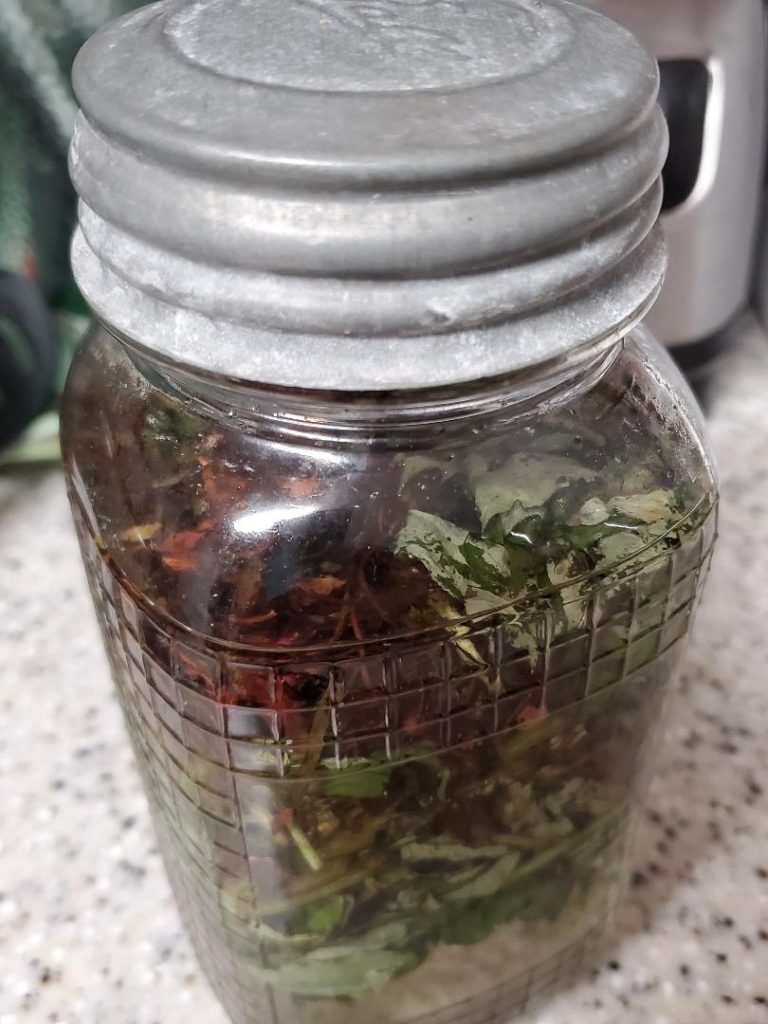
I use the entire plant to make a tincture. This way I get the whole plant’s synergy into my medicinal liquid extract.
I suggest you keep a watch for this hidden little gem of a plant. In the early spring, take a nibble on a leaf and see what you think. Or just admire the ornamental flowers sticking up above the stems. Either way, I think you’ll find that this plant has a personality all its own!
Resources
Thayer, Samual (2006). The Forager’s Harvest: A Guide to Identifying, Harvesting and Preparing Edible Wild Plants. Birchwood, WI: Forager’s Harvest
Alfs, Matthew (2013). Edible and Medicinal Wild Plants of the Midwest. New Brighton, MN: Old Theology Book House
http://www.naturalmedicinalherbs.net/herbs/h/hydrophyllum-virginianum=virginia-waterleaf.php
http://www.wildfoodies.org/EasternWaterleaf.htm
https://pfaf.org/user/Plant.aspx?LatinName=Hydrophyllum+virginianum
https://practicalplants.org/wiki/Hydrophyllum_virginianum
https://www.ediblewildfood.com/virginia-waterleaf.aspx
http://www.illinoiswildflowers.info/woodland/plants/va_waterleaf.htm
